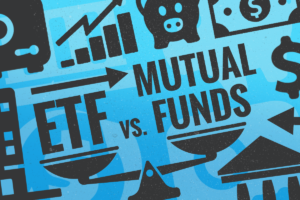
By ATGL
Updated April 24, 2024
Sector ETFs, which stands for exchange-traded funds, offer a means to invest in specific sectors or industries of the economy. They concentrate on collections of companies within a single industry sector, such as technology, health care, or finance. This tailored approach empowers investors to finely tune their exposure to specific industry trends, offering a more concentrated investment strategy compared to broader ETFs that encompass a diverse range of stocks and industries.
Sector ETFs Explained
Sector-specific exchange-traded funds meticulously track clusters of companies, often linked by common product lines or services, marking a clear distinction from other sector groups. Take, for instance, a tech-focused sector ETF, which includes a wide range of technology firms from software developers to hardware manufacturers.
Investing in these sector ETFs provides a focused approach to investing, targeting segments of the economy without having to research and buy single stocks. This strategy creates possibilities to leverage broad economic trends or to explore the growth prospects within particular sectors.
Unlike certain conventional funds, sector ETFs are not constrained to replicate broad market indices. They might hone in on niche segments within a broader sector, like cloud computing in the tech world, or even expand beyond traditional sectors to include emerging markets or commodities. This flexibility allows investors to fine-tune their portfolios to an entire industry or to specific trends within them while maintaining a base level of diversification.
Concentration on specific areas can also pose heightened sector risks when compared to broader ETFs, managed funds, or index funds. If a particular sector experiences a downturn, the effects can be amplified in sector ETFs.
4 Tips To Invest in Sector Exchange-Traded Funds
Here are four tips to help you get started with investing in sector ETFs.
1. Identify Your Investment Objectives
Begin your foray into sector ETFs by defining clear investment objectives. Are you aiming for rapid growth or steady income? This decision shapes your portfolio. High-growth sectors like technology can offer substantial returns but carry more risk, while stable sectors like utilities offer consistency but might grow more slowly. Your risk appetite and investment timeline are key here. Understanding these will help in selecting sectors that align with your goals.
Consider how different narrow market sectors align with economic cycles. Growth sectors typically outperform during market expansions, while defensive sectors like health care or consumer staples might be less impacted by market volatility. These dynamics are vital in aligning your portfolio with your risk tolerance and financial objectives.
2. Research Different Industry ETFs
In-depth research is key to successful sector ETF investing. Start by analyzing various sectors and understanding their current market position and future prospects. For example, consider how economic, political, and social trends might affect different industries. A sector that is underperforming due to temporary market conditions might present a good investment opportunity if its long-term prospects are solid. While some ETFs might focus on the larger 11 sectors of the stock market, others might be more niche, targeting specific industries or strategies.
After pinpointing a potentially lucrative sector for investment, take a closer look at the ETFs offered within that sector. Examine their performance history, management fees, and the diversity of stocks within the ETF. Some ETFs concentrate on a few large companies, while others offer a broader range of small and mid-sized firms. Understanding the underlying assets can help you anticipate potential risk and reward trade-offs.
3. Build a Diversified Portfolio of ETFs
Don’t overlook the importance of diversification. Investing in different stock sectors can spread risk and reduce the impact of any one investment area underperforming. If one sector experiences a downturn, another might be thriving, balancing your overall portfolio performance.
Consider including a mix of cyclical and non-cyclical sectors. Cyclical industry sectors, like technology or finance, tend to perform well when the economy is strong, while non-cyclical sectors, such as health care and utilities, often provide stability during economic downturns. You should also look into diversifying within sectors as well. This could mean allocating a percentage of assets to ETFs that cover different geographic regions, have varying market capitalizations, or are within sub-sectors, such as AI, software, and hardware.
Outside the ETF industry, you can also diversify your portfolio by mixing in other types of investments, such as bonds, international stocks, and real estate. This approach helps create a well-rounded portfolio that can withstand market fluctuations more effectively.
4. Don’t Be Afraid To Ask for Investment Advice
Finally, never underestimate the value of professional investment advice, especially if you are new to sector funds. A financial advisor can offer personalized guidance based on your financial situation, risk tolerance, and investment goals. They can also help you navigate the complexities of various stock markets, understand the nuances of different sectors, and develop a comprehensive ETF investment strategy.
In addition to investment recommendations from advisors, consider leveraging various educational resources. Websites, webinars, investment courses, and seminars dedicated to ETF investing provide valuable insights into market trends, sector-specific dynamics, and investment strategies. Staying informed through these channels can enhance your understanding and confidence in managing your investments. Remember, the goal is not just to invest in a sector because it exists, but to make informed decisions that contribute positively to your financial well-being.
It’s also important to review and adjust your investments regularly. The market is dynamic, and sectors performing well today may not do so tomorrow. Regular consultations with your financial advisor can help you stay on top of these changes and ensure that your investment portfolio remains aligned with your long-term financial goals.
Discover an Investment Strategy for Your Sector ETFs Products
Sector ETFs present a dynamic and focused investment opportunity. They allow you to tap into specific industry trends and capitalize on the growth of targeted market segments without having to worry about the dramatic price fluctuations that can occur with individual stock prices. Whether you’re looking for currency-hedged ETFs concentrated in the international tech sector or domestic ETFs conservatively spread across major industries, these funds offer a strategic approach to diversify your portfolio while gaining semi-concentrated exposure to specific sectors.
If you’re interested in further refining your investment strategy with sector ETFs, Above the Green Line’s ETF sector rotation strategy offers a comprehensive guide. This strategy helps you focus your investment on the five strongest ETFs with a quarterly adjustment to make sure you’re always invested in the highest-performing sectors. This takes the guesswork out of choosing which sector ETFs to invest in and helps you stay ahead of market trends.





